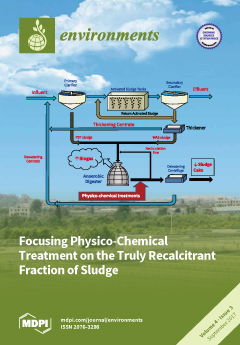Soil erosion is an issue in the Mediterranean slopes. Erosion plots are useful to quantify erosion rates, but data are difficult to scale up to a slope level. Moreover, short observational frameworks are generally established, making it difficult to represent multi-year fluctuations. This
[...] Read more.
Soil erosion is an issue in the Mediterranean slopes. Erosion plots are useful to quantify erosion rates, but data are difficult to scale up to a slope level. Moreover, short observational frameworks are generally established, making it difficult to represent multi-year fluctuations. This paper deals with the potential of parsimonious modelling to upscale plot erosion (~23 m
2) at Monte Pino Met European Research Observatory (South Italy) from 2001 to 2006. Under the assumption that the slope is fractal and contains plots, monthly gross soil erosion was modeled by lumping together the erosivity factor (runoff component), Normalized Difference Vegetation Index (vegetation cover factor), and the spatial scale dependence (slope length factor). This model was applied to reconstruct monthly gross soil erosion rates for the period of 1986–2006, for which hydrological inputs were available with sufficient detail. Pronounced interannual variations, with two distinct patterns, were observed: increasing rates of erosion were visible in 1995–2006 (peaking in November 1997, 50 Mg·ha
−1·month
−1), while in previous years only a few peaks slightly exceeded the average of the whole period (1 Mg·ha
−1·month
−1). Hydrological conditions indicate that important erosional processes have been triggered during low-frequency, short rainfall events occurring in spring–summer (e.g., May 2001, June 2003), or during longer, less intense events occurring in autumn–winter (e.g., November 1997) seasons. It is likely that increased precipitation amounts associated with more frequent convective storms created conditions for higher energy events triggering erosion. For the recent warm period, investigations at a higher than monthly resolution are required to better assess the seasonal changes of erosion rates and their relationship with soil conservation.
Full article





